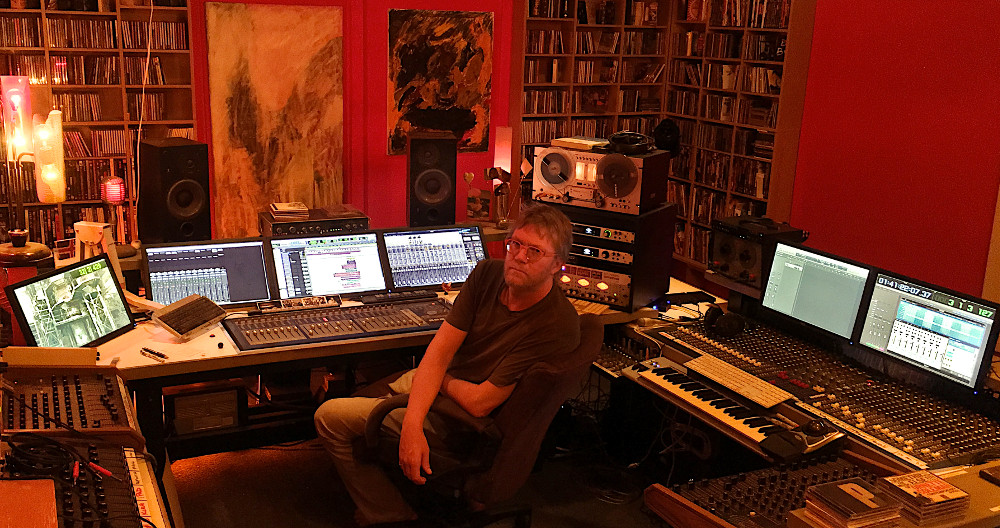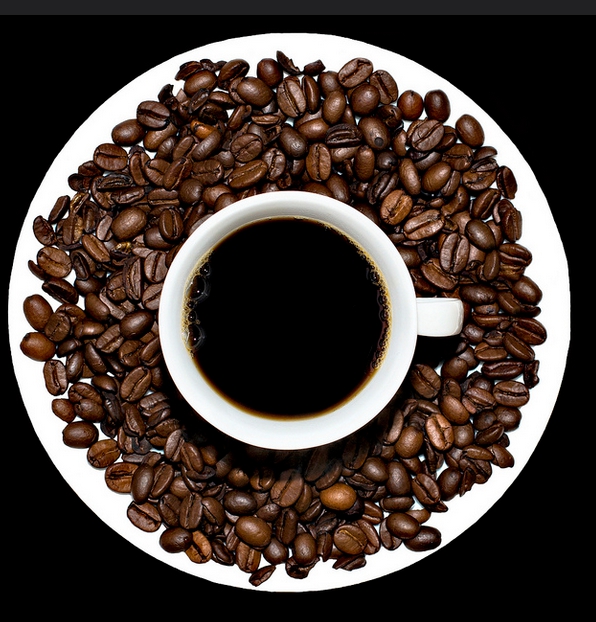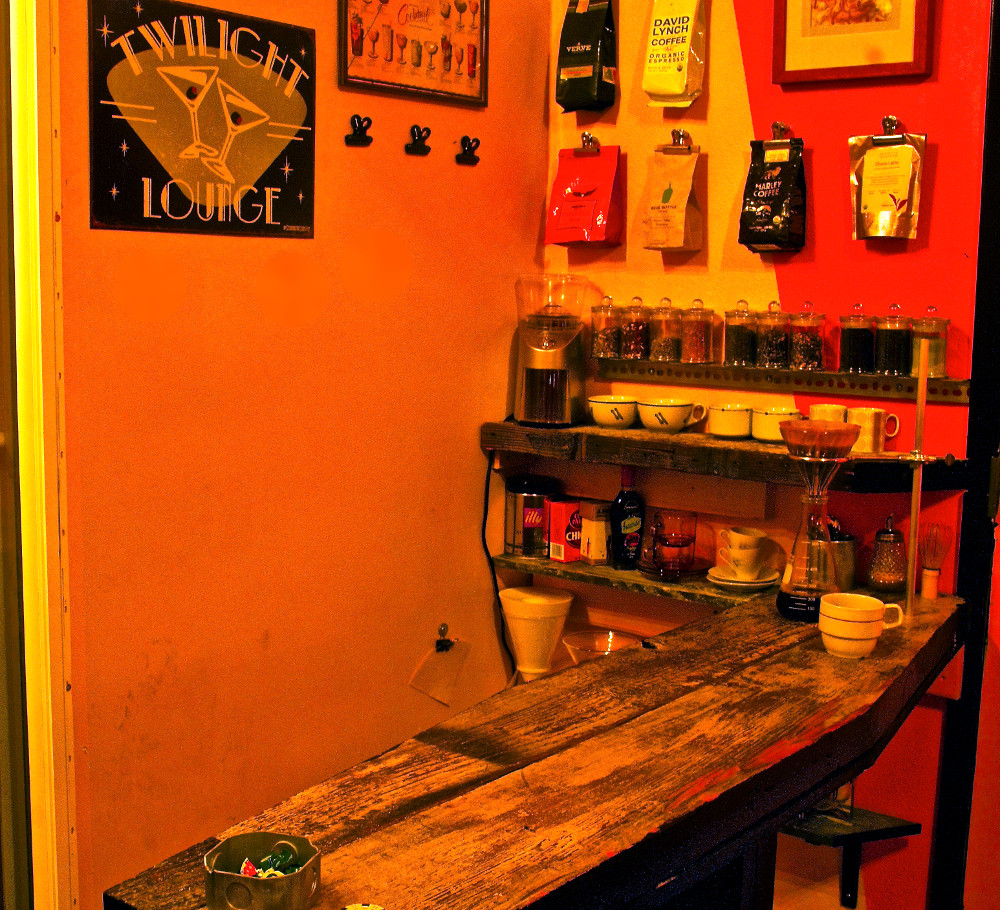I Didn’t Single-Handedly Bring the Coffee Revolution to L.A. (But I Certainly Tried…)
My great grandmother used to roast her own coffee beans in the oven, on a small farm in northern Iceland.
I have a feeling this coffee obsession was passed on to me, from both my grandparents and parents. There was coffee at breakfast and lunch, mid-day at 4pm, after dinner and then one final sit-down at 10pm, with some cookies or pastries. It was always strong, most of the time black (perhaps a lump of sugar on the side) and always about people coming together.
A lot of my great grandmother’s neighbors had the same story to tell: “If you have anything to do in the morning, don’t go for her coffee…. it’s totally NC-17 (or rated R, at least) and you won’t sleep for three days.”
When I was 14 I moved into a new room in our basement. My parents had built a house, and the basement was the last section to get finished. If fact, my room was the only one furnished down there, for quite a while. I’d saved up all my summer-money, I did the walls, I chose the carpet, I picked out the light fixtures and lamps, and made it into the perfect den. It quickly became the place to meet, since most of my friends had very small rooms (standard for Iceland at the time) and certainly none of them had a separate entrance

GRAMMY-winning audio engineer S. Husky Höskulds has some strong opinions when it comes to coffee in the studio.
We’d meet there after school or work, listen to music, drink coffee, have some good chocolate or snacks (#studiosnacks) and some great friendships were quickly cemented – many still going strong today.
So, that was the groundwork.The home-roasted coffee beans – or at least the need for something better than the norm – the room in the basement with the separate entrance, and the friends coming over. The idea of the hang: listening to music, sharing and bonding. And a big part of all that, was the right environment (good coffee, good snacks, good music).
Café Calamity
Fast forward a couple of years, and I’m in Los Angeles studying Recording Engineering at UCLA. We’re starting to go on field trips, getting to go see “actual studios” and I’m all ears (and eyes). We went to a post production facility in Pasadena, a scoring stage at Warner Bros. and a mastering facility in Hollywood.
And, of course, I’m thinking: “These places must have some sort of world class coffee situations. I mean, if my great grandmother could find and roast her own beans on a farm in Iceland in the 40’s, these guys would surely have it together.”
But no.
This was remarkable to me. At Warner Bros. and the Pasadena facility the coffee maker was a Bunn 1.8 Liter single brew. With a thin cone filter, crap coffee and no one to look after it. There was a “dedicated person” sitting in the tape room all day, to load/unload reels of 2” tape while they were mixing the movie (every 4 hrs or so), but no one to look after the coffee.
So here was this facility doing mixes for Batman (the Tim Burton movie) – the engineers showing us the technology behind the first Dolby Digital Surround release (did you know they put the 1’s and 0’s on the plastic squares BETWEEN the sprocket holes on the actual filmstrip??!!) – but with a $39 drip coffee maker in the lobby, sans supervision.
Out of all the places we went to, the only facility that had decent coffee was Bernie Grundman’s mastering studio in Hollywood. As a matter of fact, he had a proper espresso machine in the lobby and he took as much time showing that to us as he did talking about the gear and the tech side of things. Or at least that’s how I remember it.
Socking it to the Studio
Right out of school, I got a job in a studio in North Hollywood. They’d just finished recording Metallica’s Black album, and were on a bit of a roll. I got in there as a runner (tea boy, if I were in England) and quickly saw the coffee operation needed some attention.
I easily made my ins with the clients: Steve Perry was in, and after him Paul Rodgers. And then Terry Date (with the mighty Fishbone) and it became clear that “If Husky didn’t make the coffee, it was pretty useless”. “When is he in??” they’d ask. “Because we’re fucked… until he gets here”. The other runners didn’t know the trick of using two filters at a time, for a slower pour-through.
I moved on from there to become a staff engineer at a studio in Hollywood, and the first project I worked on was a band called The Grays, with Jack Joseph Puig producing. We quickly abandoned the Bunn coffee situation, and Puig bought a proper coffee maker for the band – which I set up in the tracking room. We would take turns bringing in beans, and I was made in charge of the coffee every morning, leaving the staff and runners to the Bunn/Folgers experience in the lobby.
[Sidenote: after the Grays record, I got married. And of course I rented out a coffee shop for the day, and the whole band and Puig were there… Amazed, that there were “bottomless” espressos and latte’s for the guests, for the duration.]
After that, I got hired at the Sound Factory, where I would stay until I went freelance. As soon as i started, the coffee became an “issue”. More Folgers, and that same fucking industrial Bunn brewing machine. I asked for better coffee but couldn’t convince the bean counters (pun) to go for the extra expense. So I started bringing in my own beans and grinder and I trained the runners to make “a proper cup of coffee” for me and my sessions – and to put it in our own private thermos, labelled “NC-17.”
It didn’t take the management long to take note. And eventually, through shaming and other shenanigans, i got them to switch over to real beans and real coffee, and from that point on, the big 3 lb tins of Folgers were history.

Coffee has long been at the center of Höskulds’s musical world. (image by Slew Feun, Flickr Creative Commons)
The Grays – as they were forming – had one of their first meetings at a coffee shop in West Hollywood called King’s Road Cafe. I soon started going there regularly. They made fantastic coffee (one of very few “proper” coffee shops in LA back then) and for years after the Grays record I’d invite my engineer and producer friends there on Friday mornings, for coffee and a chat. Sort of a recreation of the basement den, I suppose.
I’ve kept this going, in various iterations and at various coffee shops, ever since. Close to 25 years now.
Personal Studio, Personal Brewing Rig
When I built my first studio, 15 years ago, the coffee culture was still in its infancy here in LA, and I started out with a simple filter/pour over system and a small assortment of beans from Victor’s Deli on Beachwood Cyn. They were one of very few places that actually roasted their own beans and I’d been going there since the Grays/Puig days. The two expats from Greenblatt’s Deli, who ran the place, were intrigued by the Icelander who came in and bought 5 lbs of coffee beans and one biscotti, each week. No wine, no sandwiches, no cheese, no pickles.
As I built bigger and better studios, the coffee setup evolved. Right now I have two different systems: The Chemex, for more than two cups, with the superfine two layer conical filters… and the custom Groundlift Research & Development situation, for the smaller two-person jobs, or myself, mixing solo.
That one consists of a Pyrex Erlenmeyer beaker (from the chemistry website), an aluminum post drilled into the coffee bar and a stainless steel 3” ring support holding the Hario V60 glass dripper. The Hario V60 Buono Pouring Kettle – with the gooseneck spout for that perfect pour over – and the Stainless Steel conical Burr grinder round out the setup in the coffee dept. along with the Breville BMF600XL milk frother.
Having a proper grinder is imperative, since the V60 filters are slightly thinner than the Chemex ones, so i go a couple of clicks finer on the Burr for the coffee there (slower pourthroughs). (Learn more about pour over coffee-brewing here.)
Bird Pick in Pasadena has one of the finest selections of looseleaf teas in town, and I’m a frequent guest there, restocking the 10 different teas I have. They also sell fantastic little glass jars, airtight, so I’ve got the teas organized from decaf to high caffeine, with Rooibos on the left straight up to real Matcha powder on the right, with the accompanying bamboo whisk and bowl. Something I picked up from The Wood Bros and John Medeski, making a record at Allaire Studios back in the day. Now that’s some rocket fuel!
A Reel Coffee Break
In the old days, at the Sound Factory, we would record to tape. So, to start each song, we would put the reel up on the Studer, I’d get up a rough mix, patch in the headphone feeds (for the musicians) and get going.
This meant that when switching songs I could get up, have my assistant put up the next song (reel), and walk to the lobby (or outside, even) and have a cup of coffee. It was like a built-in break system. You take a moment. Clear your head. Mingle with the people working in the other rooms. A sense of comradery and community – perhaps a bit like the den in the basement again.
This is one of the things I miss the most about those days, where now everyone has their own studios and you rarely run into anyone outside the immediate orbit of your own project. No communal water cooler or coffee station.
Also, with things going digital, the “setup” time between songs (now sessions on a computer) is none. And if I’m not careful, I don’t get up out of my chair at all, for the whole day. I can close one session and be up and running with the next one in 30 seconds.
This is where it’s good to have a proper coffee bar in the studio (or a pipe to stuff, if that’s your game). You get up out of the chair and head for the coffee bar: built-in break…
BIY (Brew it Yourself)
And there’s a method, of course:
1 – Get a small amount of water boiling in the kettle
2 – Grind the beans and add the coffee to the Chemex or V60 (by now that small amount of water should be boiling)
3 – Do a small pour over to get the grinds blooming (the key is to soak the coffee, but not have any water leak through – yet).
4 – Add rest of water to the kettle and bring to a boil (this, while the grounds are blooming)
5 – Pour rest of water, slowly, in a circular motion from outer to center, into the filter
6 – Get milk going in the frother
7 – Pick a cup fitting each band member
8 – Add milk where applicable
9 – Add coffee
10 – Sit down and have a conversation about everything but gear and politics.
Percolating Personality
Someone once said, “Everything you do, says something about you.” And I think that’s true. When people walk into my studio they see art on the walls, books, DVD’s and CD’s on the shelves, and colored bulbs in the lamps. The desks, a lot of the furniture, and the shelves are largely built by me. A custom fit, as it were. Designed perfectly for each task.
I have magazines about Cinematography, Architecture and Photography. Some good chocolate and Italian liquorice (#studiosnacks) but no Mix Magazine or Billboard (why someone would want to read about “The Business” while trying to be creative, has always been a mystery to me).
And this is what I’m into. It doesn’t make me any better than the next guy or girl making a record in their studio, but it does reflect my personality. And I always felt having my own studio was a perfect opportunity to share that – and maybe that would create a connection with the artist. Perhaps even inspire something.
I usually have a movie going on the BluRay player when I work. Most of the roughly 600 movies I own are picked for the visuals. The Third Man, City of Lost Children, THX 1138, Northfork, Ex Machina or Blade Runner…. There’s a common thread there: a strong point of view. Those movies were not made to fit in. They broke the mold. And that’s inspiring.
Every once in a while I’ll glance over and get inspired by the creative use of depth of field, the choice of a lens or the way a light creates a shadow. All conscious deciisions by the cinematographer. He or she putting their stamp on the movie: bringing something to the table and having an opinion. And more often than not, it will start some sort of a dialog with my artist.
A lot of albums sound the same to me, these days. The same drum treatments, the same vocal treatments, and on the rare occasion there is a deviation, it seems disconnected from the song, or its meaning. Sort of a copied idea: “distorted vocals in the verse, like that song on the radio”. But mostly, 12 white eggs neatly identical, in an egg carton. None stand out. None catch your eye. I don’t know what coffee these people are drinking, but I’m sure it’s not David Lynch’s Espresso Roast.
Of course this might all just be for me, in the end. And it might have a limited effect on my clients, or other engineers. Maybe they don’t care about the coffee, the teas, the lighting, the literature. Maybe they’d rather read Billboard Magazine or Tape Op… and maybe they are perfectly happy to drink Folgers coffee out of a paper cup.
But in the words of the great philosopher (and NBA alum) Charles Barkley, I’d say: “I could be wrong, but I doubt it.”
S. Husky Hoskulds is a GRAMMY-winning audio engineer, mixer, producer and founder of the studio and artist community Groundlift Research & Development, Los Angeles. His credits include Tom Waits, Ornette Coleman, Mike Patton, Elvis Costello, Allen Toussaint, Mavis Staples, Solomon Burke, Sheryl Crow, The Wallflowers, Joe Henry, My Brightest Diamond, and Meshell Ndegeocello.
Please note: When you buy products through links on this page, we may earn an affiliate commission.









yluko
January 11, 2018 at 9:40 pm (7 years ago)More articles like this! Loved it and love coffee!